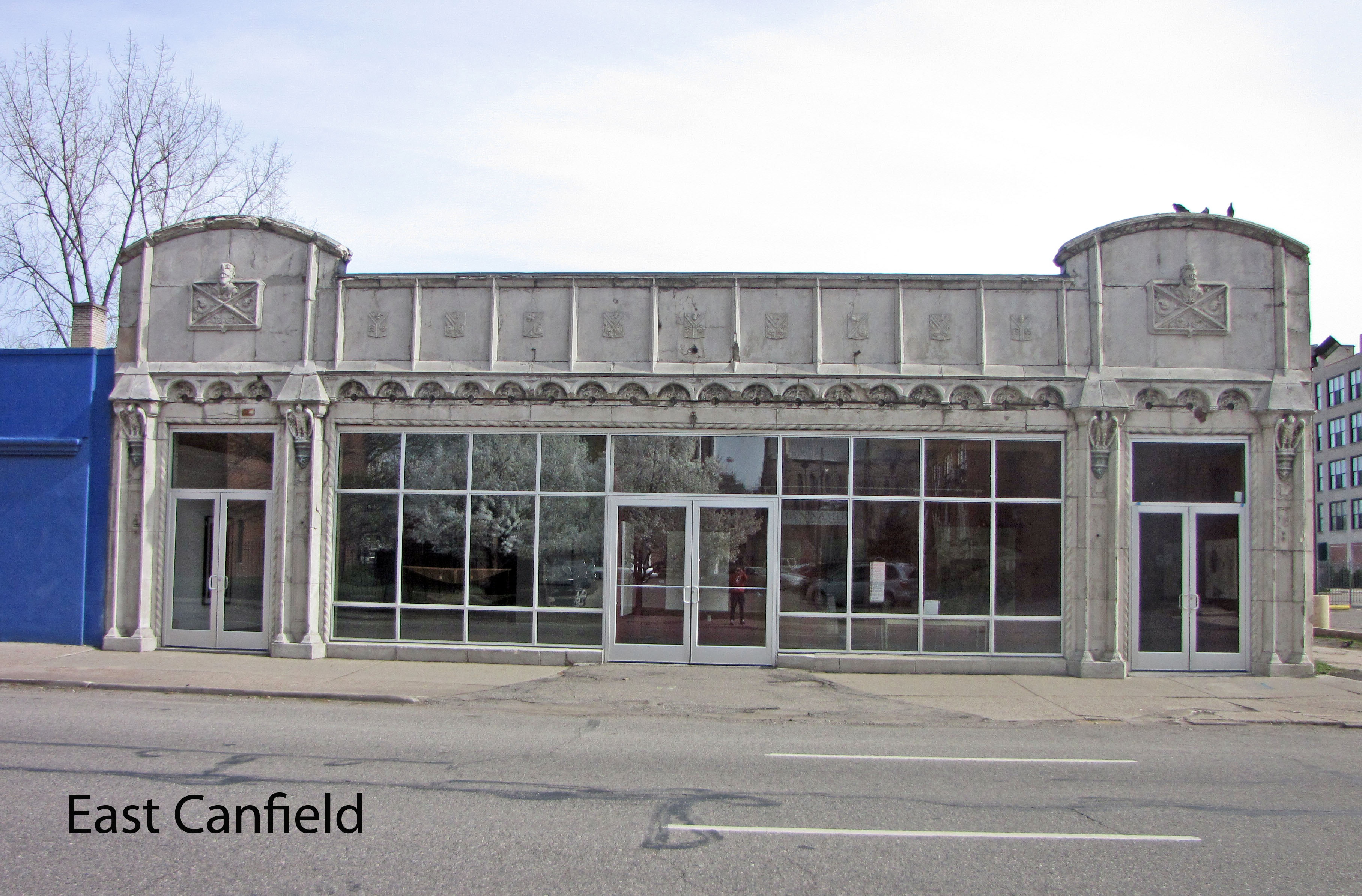Sugar Hill Historic District
Both sides of East Canfield, East Forest and Garfield between
Woodward and John R
The black population of Detroit grew rapidly for the first time during World War I. Census 1920 enumerated 41,000 African-Americans in a city 0f 993,000 while the census a decade later counted 149,000 blacks in a city of 1.6 million. A black middle class developed rapidly, including doctors, dentists, undertakers, real estate brokers, entertainment entrepreneurs and those working in the 
numbers trade. African Americans faced severe restrictions upon where they might live, but the older Victorian-era homes to the east of Woodward became less appealing to whites as newer neighborhoods, including Boston Edison and Indian Village expanded. They were available to blacks. Components of what are now known as the East Ferry Street Historic District, the Frederick Street Historic District, the East Kirby Historic District and this area were home to Detroit’s emerging black middle class. This is also a neighborhood where various jazz clubs were located, clubs that featured black artists but welcomed customers of any hue.
I do not know how this area got the name Sugar Hill. I suspect that some residents borrowed it from the name used for that section of Harlem in New York that became famous during the Harlem Renaissance of the 1920s. Prosperous blacks and creative black writers lived there and many of the nation’s most talented jazz musicians performed there. That area of Manhattan is bounded by 155th on the North, 145th on the South, Amsterdam Avenue on the west and Edgecombe on the east and memorialized in Billy Strayhorn’s “Take the A Train.” He wrote that song for Duke Ellington and began with the phrases:
“You must take the A train
To go to Sugar Hill up in Harlem
If you miss the A train
You’ll find you missed the quickest way to Harlem
Hurry, get on, now it’s coming
Listen to the rail a-humming
All abroad, get on the A train
Soon you will be on Sugar Hill in Harlem”
From the viewpoint of a rail fan and former New York resident, the A train is one of the nation’s best subway trips with very rapid non-stop travel from 59th to 125th. Standing in the front of the train watching the train accelerate and speed through the tube is one of the nation’s most enjoyable rail trips. New York’s Sugar Hill, similar to Detroit’s, is listed on the National Historic Register.
After World War II, this Sugar Hill district of Detroit went into decline as the population moved away. Quite a few of the buildings in the district still need repair. However, it enjoys a very favorable location since it is less than two miles from downtown Detroit. More importantly, it adjoins the expanding Detroit Medical Center and the large John Dingell Veteran’s Administration Hospital. As the pictures on this page suggest, the former Garfield Manor building at 71 Garfield went into decline but, in 2010, is being refurbished to be a model of environmentally sound, “green” redevelopment. The design calls for an interesting mixture of twenty residential units and twenty studios for artists. As employment rises at the Detroit Medical Center and the Dingell Veteran’s Hospital, it is probable that the structurally sound buildings in this historic district will be rebuilt and used as shops, offices or residences.
Two historical register buildings abut this district, both of them facing Woodward: Albert Kahn’s 1908 Garfield Building at Woodward and Garfield and the marvelous Richardson Romanesque First Congregational Church designed by John L. Faxon in 1890 at Woodward and East Forest.
Architects: Various architects are represented
Date of construction: From about 1880 through the early 1920s
Use in 2010: At least one of the 14 buildings in this historic district is undergoing rehabilitation.
City of Detroit Designated Historic District: Not listed
State of Michigan Registry of Historic Sites: Listed: P 47,708
State of Michigan Historical Marker: None has been put in place
National Register of Historic Sites: Listed March 3, 2003
Photographs: Ren Farley; April 12, 2010
Description prepared: April, 2010
